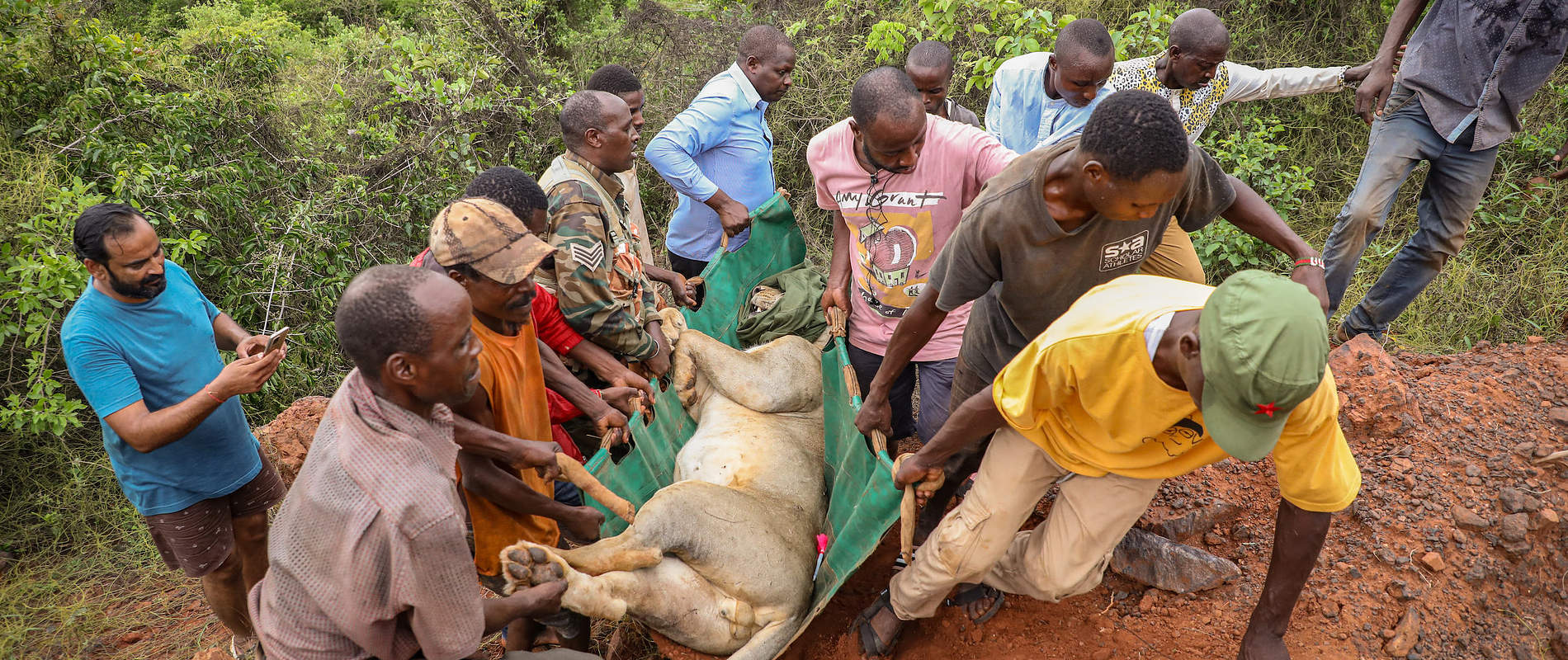When we received coordinates of a marauding lion in Kilifi County, we thought there had to be a mistake: It is unusual for a lion to be so far outside a protected area, very close to the coast and in the heart of human habitation.

And yet, the reports were true. Somehow, the lion had made his way into the heart of community lands in the coastal region, where he was preying on livestock and causing a lot of unrest. In these situations, fatal incidents of human-wildlife conflict often ensue, so urgent intervention was needed. As soon as we received the call from the KWS Assistant Director at the Coast, the SWT helicopter was mobilised to fly our SWT/KWS Tsavo Vet Unit to the scene.

Our pilot collected Dr Poghon from Voi and then made his way through a dramatic storm to Kilifi County. Rangers on the ground reported that the lion had retreated to a large swathe of dense bush. Amidst so much vegetation, it was like searching for a needle in a haystack, but the team eventually noticed a bush shake as they flew over. Circling back to investigate further, they located him. Flying low and slow, the helicopter shepherded the lion to a relative clearing, so Dr Poghon could dart him from the air.

As the lion succumbed to the anaesthetic, the helicopter landed atop a nearby hill. The team, aided by community members, promptly scrambled down the hill to where he lay. Then, they had to grapple with the gruelling task of hauling a huge, slumbering lion back up the hill. This was no small task, as he was a very large, maneless (as is typical of Tsavo lions) male in his prime. He did have an arrow wound, but it wasn’t serious.

Unsurprisingly, the sight of a recumbent lion drew in many curious onlookers. However, the growing crowd complicated an already complex operation. The original plan had been to drive the lion back into a protected area, but the cage made available to us was too small for a creature of his size. We needed to relocate him, for the safety of the community members and himself, so we made the decision to move him by air.

Plot twists are typical in our line of work. So, under the direction of Dr Poghon and the pilot, we set about securing the unusual aerial passenger. The lion’s legs were securely fastened with a rope, before he was encased within one of our elephant rescue stretches, which was then tightly bound within the helicopter to ensure a snug fit around the lion. Once he was fully secured, we managed to fit him in the back of the helicopter, accompanied by an armed KWS capture unit ranger. Dr Poghon and Pemba, the ranger, vigilantly monitored the tranquilised lion from lift-off to landing, making sure he remained in a peaceful state of slumber throughout the flight.

The team’s attention to detail ensured a smooth flight for all onboard, with the helicopter landing in the heart of Tsavo East National Park. The rest of the Tsavo Veterinary Unit team were waiting onsite to help offload the lion. It was getting late, so the helicopter had to race nightfall back to Kaluku, but a ground team monitored the patient until he woke up. With the nocturnal noises of Tsavo chiming around him, the lion stalked off into the darkness — a big cat returned to his rightful environment.
We are extremely grateful for the bravery, professionalism, and dedication of all involved, who turned a challenging undertaking into a success, for both conservation and the community. Now, the community can rest easy, and the lion is back where he belongs.
